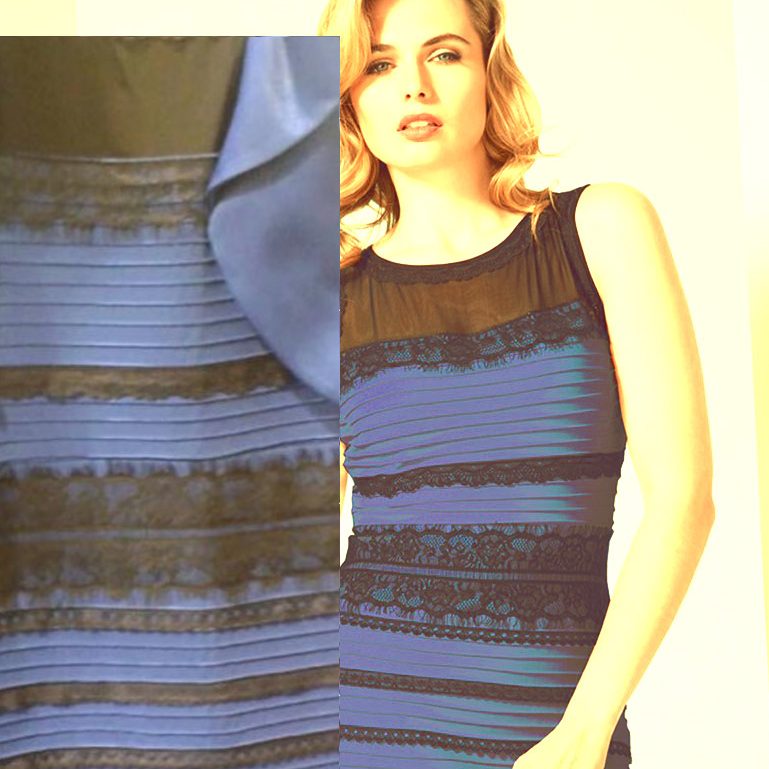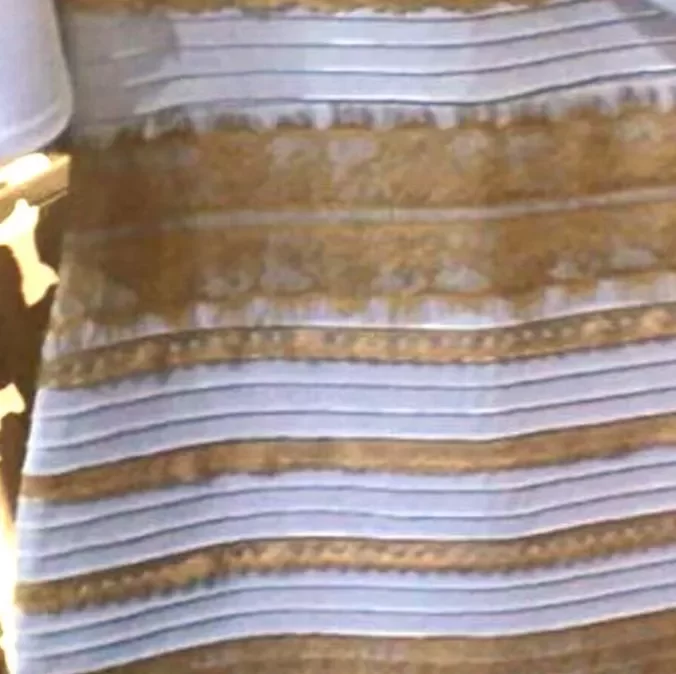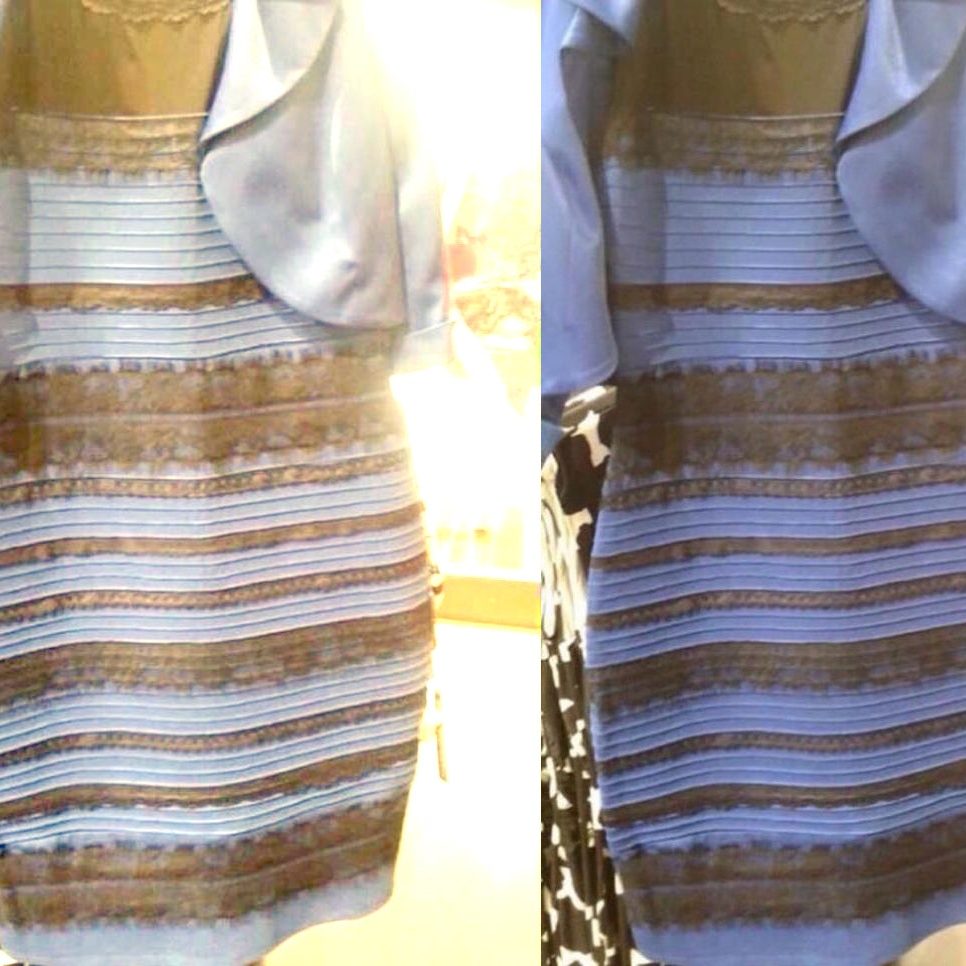The Phenomenon of Visual Perception
Understanding Color Perception Variability
The “black and blue dress” became an Internet sensation due to widespread disagreement over its color; some viewers perceived the dress as black and blue, while others saw it as white and gold. This phenomenon highlighted the complexities of visual perception and how human brains interpret colors differently. Variables such as lighting, individual perception, and even the screen on which the image is viewed can significantly alter one’s interpretation of the dress’s colors.
The Science Behind the Optical Illusion
Color perception relies on how our eyes and brain work together to interpret light reflections. The black and blue dress illusion is rooted in the way the brain processes the cues it receives about ambient light. Some viewers assumed a cooler light source, which led them to see the dress as black and blue, while others, assuming a warm artificial light, perceived the dress as white and gold. This optical illusion served as a fascinating example of how the brain can draw different conclusions based on sensory information.

The Black and Blue Dress: A Viral Sensation
The Dress that Divided the Internet
In 2015, a photo of the dress was shared online and quickly captured global attention, sparking heated debate and confusion about its true colors. Friends, families, and celebrities joined the conversation, with social networks buzzing with discussions and scientific explanations. The viral nature of the black and blue dress challenged the perception of colors and showed how personal bias and psychological factors could influence visual interpretation.
Impact on Neuroscience and Psychology
This viral debate reached beyond social media to the scientific community, providing a case study for understanding human color perception and visual illusions. Neuroscientists and psychologists used the dress to research how the brain perceives colors under varying lighting conditions. This global conversation brought attention to the study of illusions and cognition, showcasing the practical implications for fields like neurology, ophthalmology, and even marketing and design.
Color Perception in Fashion and Design
The Role of Ambient Light in Apparel
The black and blue dress phenomenon emphasized the importance of ambient light in fashion. Designers and retailers became more aware of how lighting can alter the appearance of fabrics and colors. This awareness has led to thoughtful considerations in the presentation of clothing in stores and online, ensuring that customers get a more accurate representation of the garment colors despite varying lighting environments.
Exploiting Illusions in Garment Creation
Theblack and blue dress illusion inspired designers to explore visual tricks and illusions in their creations. By understanding how the eyes and brain collaborate, fashion designers can create garments with colors and patterns that create flattering illusions about body shape and size. Playing with colors and illusions is a tool that can enhance the aesthetics and appeal of fashion items.

Resolving Color Discrepancies: Tips for Consumers
Recommendations for Online Shopping
To avoid discrepancies in color perception while shopping online, consumers can follow a few guidelines. It is essential to view product images on different screens and settings, as this can reveal variations in color due to display differences. Reading product descriptions for color information and checking return policies regarding color satisfaction can also mitigate the risks of purchasing items that do not match expectations.
Color Verification in Physical Retail
When shopping in physical stores, customers can take steps to verify the colors of garments under different lighting conditions. Consumers can view the item near a window for natural light perception or in various areas of the store where lighting may differ. Requesting fabric swatches, when available, can also aid in confirming the garment’s color in multiple lighting situations outside the store.
The Influence of the Dress on Internet Culture and Memes
The Dress as a Cultural Phenomenon
The black and blue dress took its place in Internet culture as a notable meme, representing how viral content can unite the online community in shared fascination and debate. Its impact was not only in the realm of fashion and visual perception but also in the power of social media to amplify human curiosity and the collective desire to solve a mystery.
Lessons from the Dress’s Popularity
The widespread attention garnered by the dress taught content creators and marketers about the power of engaging content. Memes and intriguing content can provoke dialogue and capture public interest, driving traffic and participation. The phenomenon demonstrated how visual stimuli, when presented in a certain way, can generate vast engagement and become deeply ingrained in the digital landscape.
The Legacy of the Black and Blue Dress
Ongoing Investigations into Perception
The black and blue dress continues to inspire scientific inquiry into visual perception and the brain’s interpretation mechanisms. The discussions it sparked have led to further studies and experiments designed to unravel the complexities of sight and cognition. Its legacy enriches scientific understanding, with the dress often cited in academic research and discussions about the nature of perception.
The Dress in the Context of Fashion Evolution
In fashion, the black and blue dress will be remembered as a garment that brought color perception to the forefront of design considerations. It has encouraged fashion professionals to think more deeply about how colors are portrayed and perceived, leading to more careful curation of color and fabric choices. The dress remains a touchstone for the evolving conversation about how we see, process. And discuss fashion in the modern world.
In summary, the black and blue dress illusion stands as a testament to the intricacies of human perception and the nuances of color interpretation. It has influenced various aspects of our daily lives, from shopping habits to scientific investigation, and has firmly embedded itself into Internet culture. As fashion continues to explore the interplay between color and design. The legacy of the black and blue dress carries significant weight, reminding us of the subjective nature of sight and the potential for optical illusions to create global sensations. Whether through scientific research, design innovation, or cultural dialogue. The dress has left a lasting impact on our understanding of the human experience and our interactions with the visual world.

Expanding the Dialogue: The Everlasting Impression of the Dress
Fostering Communication and Debate
The black and blue dress became more than just an optical illusion. It was a catalyst for dialogue and debate across various platforms worldwide. It fascinated individuals from diverse backgrounds, prompting discussions in office spaces, classrooms, and online forums. These debates often led to broader conversations about human perception and individual differences. This dress became an iconic example of how our sensory experiences can widely vary. Challenging the way we perceive reality and communicate our perspectives.
Influencing Perceptions in Art and Media
The illusion generated by the black and blue dress transitioned into the wider realms of art and media. Artists took inspiration from the debate to explore the subjectivity of color in their works. Often using this example to highlight how viewer perception can influence their interpretation of art. Similarly, in media, the dress has been referenced in various contexts, from TV shows to advertising campaigns. Each time underscoring the unpredictability of audience perception.
Advancements in Display Technology
The viral phenomenon of the black and blue dress has had implications for the tech industry. Particularly in advancements in display technology. Manufacturers and software developers have been inspired to create screen displays with better color accuracy and ambient light sensors that adjust brightness and hue. Aiming to mitigate misunderstandings about color. This brings a newfound appreciation for technology that more accurately reflects the real world, potentially reducing discrepancies in how colors are viewed on-screen.


